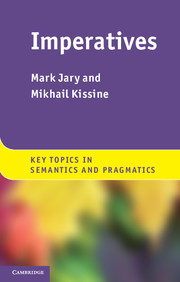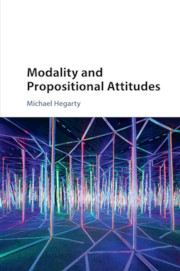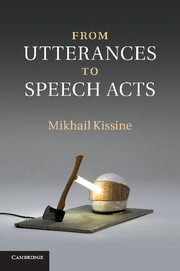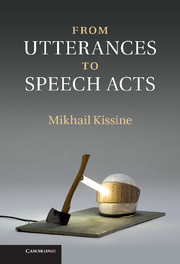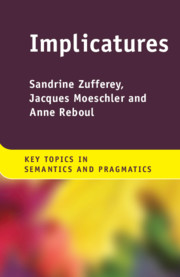Imperatives
Imperative sentences usually occur in speech acts such as orders, requests, and pleas. However, they are also used to give advice, and to grant permission, and are sometimes found in advertisements, good wishes and conditional constructions. Yet, the relationship between the form of imperatives, and the wide range of speech acts in which they occur, remains unclear, as do the ways in which semantic theory should handle imperatives. This book is the first to look systematically at both the data and the theory. The first part discusses data from a large set of languages, including many outside the Indo-European family, and analyses in detail the range of uses to which imperatives are put, paying particular attention to controversial cases. This provides the empirical background for the second part, where the authors offer an accessible, comprehensive and in-depth discussion of the major theoretical accounts of imperative semantics and pragmatics.
- Provides an in-depth analysis of the major theories of the imperative mood, giving the reader a systematic 'roadmap' of the field
- Contains three appendices which summarize all the necessary technical information
- Each chapter includes discussion questions and suggestions for further reading
- Includes a glossary giving accessible definitions of key words
Reviews & endorsements
'This study, of the meanings and functions of imperatives, is unusual for its lucid and up-to-date analysis of complex data, typological variation and hypotheses from various perspectives. Read it and you will be a better linguist.' Johan van der Auwera, University of Antwerp
'This is a terrific book. It looks at imperatives from a variety of insightful perspectives (social, grammatical and philosophical) and brings to bear evidence of many kinds, including evidence from a host of languages. Jary and Kissine's volume will, from now on, be the departure point for anyone studying the imperative mood.' Robert J. Stainton, University of Western Ontario
'An impressively compendious distillation of work on the imperative, which is both original and accessible. The book is rich in (cross-linguistic) data, sound argument and insightful analysis. If you are interested in the semantics/pragmatics of linguistic mood and illocutionary force, read this book!' Robyn Carston, University College London and CSMN, Oslo
Product details
No date availablePaperback
9781107632356
336 pages
216 × 140 × 18 mm
0.39kg
2 b/w illus.
Table of Contents
- Part I. The Data:
- 1. What is the imperative mood?
- 2. Imperative mood and directive force
- 3. Imperatives with conditional meanings
- Part II. The Theories
- Introduction to Part II: from data to theory
- 4. The imperative is directive force
- 5. Declarative-like semantics for imperatives
- 6. The imperative as a distinct semantic type
- An opinionated conclusion
- Appendix A. Possible worlds and semantics
- Appendix B. Modality in possible-word semantics
- Appendix C. Stalnaker's common-ground model of assertion
- Glossary.

